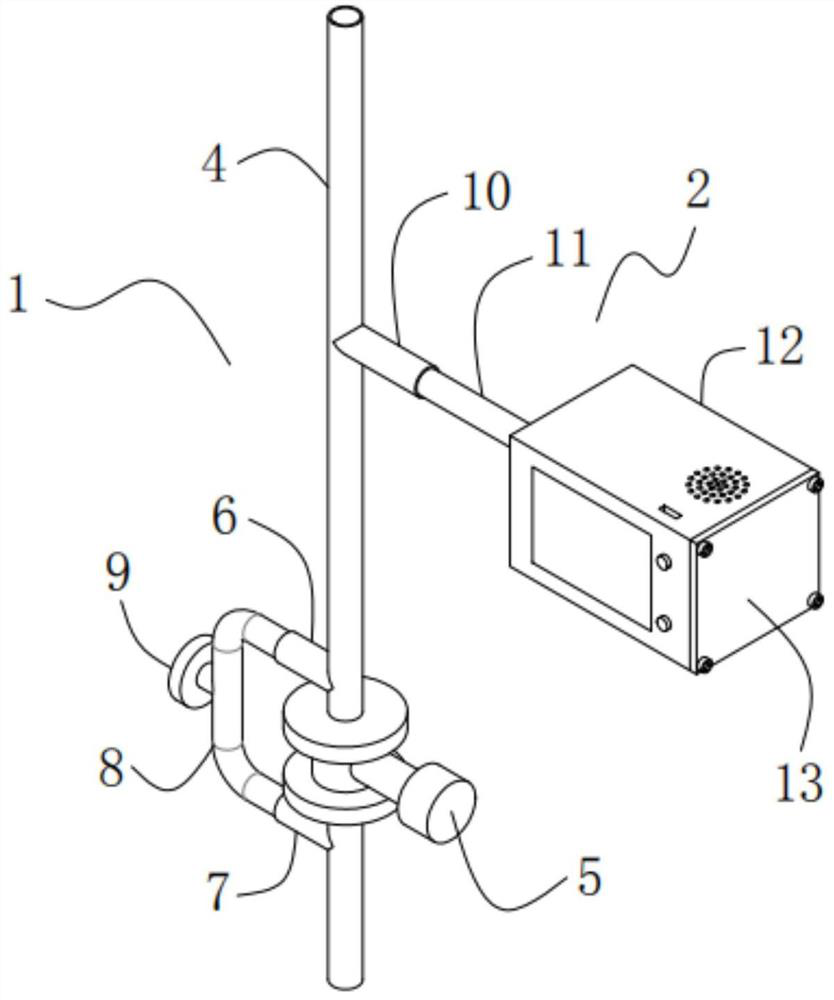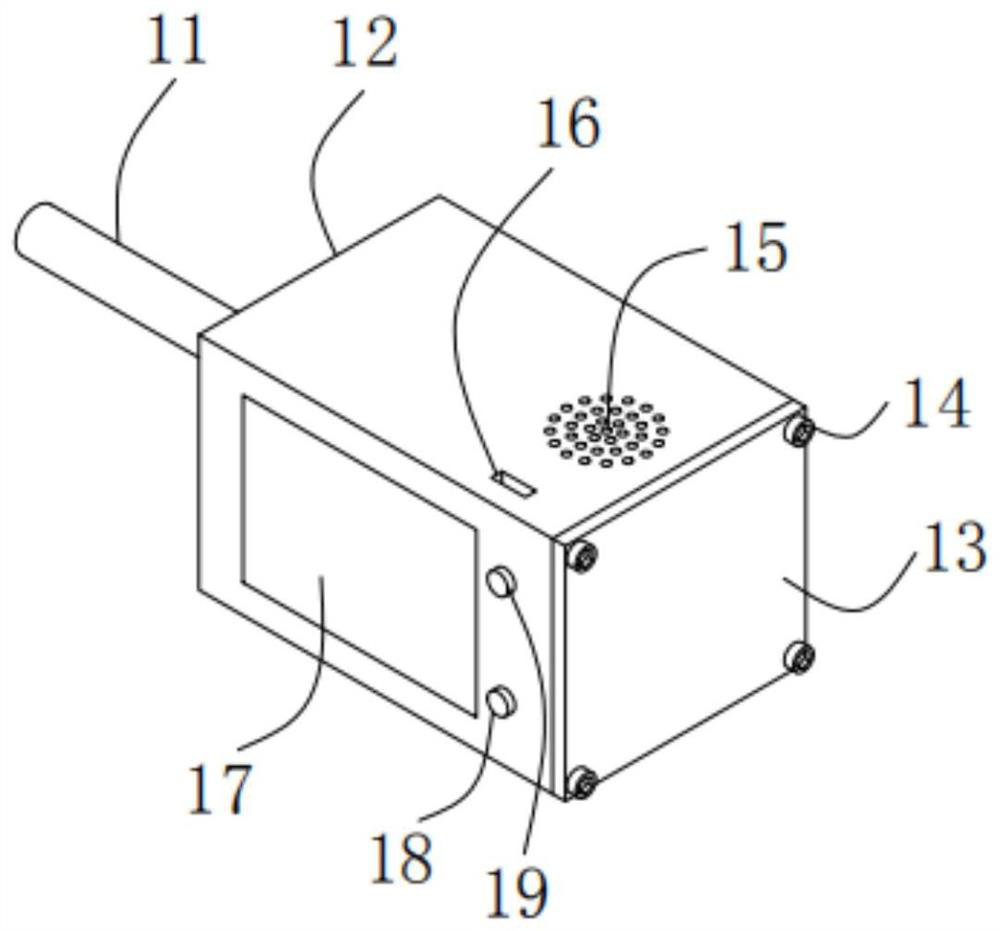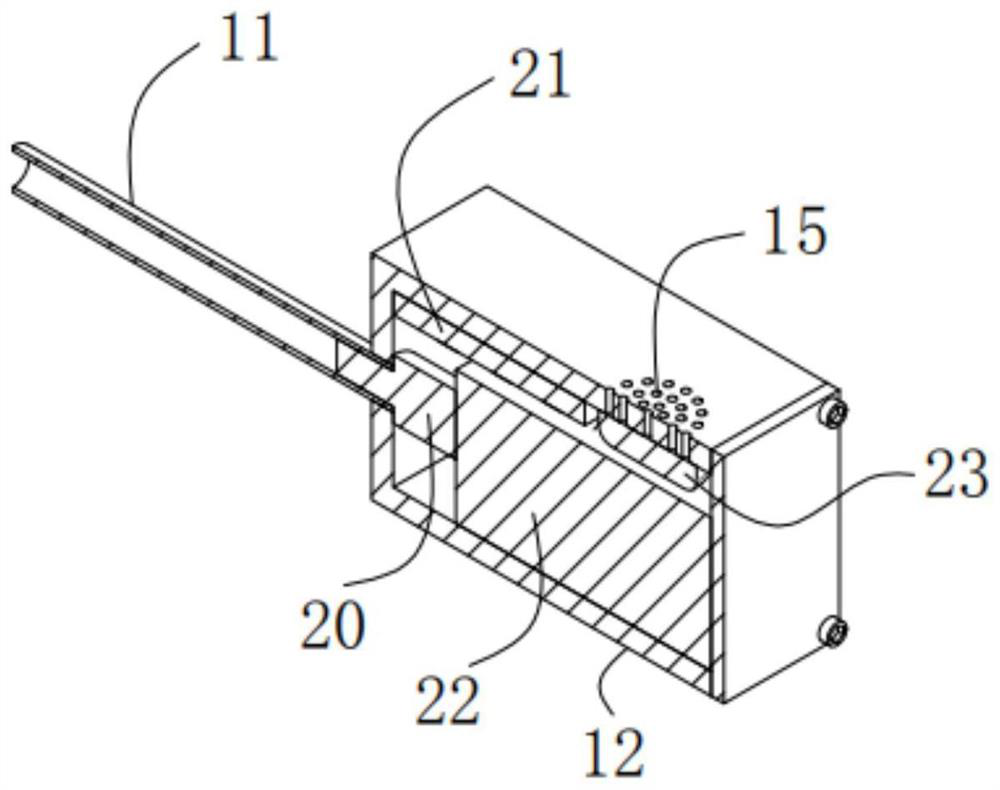Urinary catheter for patients with spinal cord injury
A technology for patients with spinal cord injuries, applied in the field of urinary catheters for patients with spinal cord injuries, can solve the problems that the catheter cannot be monitored for pressure, does not have the function of alarm, and is inconvenient to the patient's bladder, so as to prevent kidney failure and avoid pressure Elevation, the effect of high safety and reliability
- Summary
- Abstract
- Description
- Claims
- Application Information
AI Technical Summary
Problems solved by technology
Method used
Image
Examples
Embodiment 1
[0056] A kind of catheter for patients with spinal cord injury, such as figure 1 As shown, it includes a catheterization part 1 and a pressure sensing part 2; the pressure sensing part 2 is installed on the catheterization part 1;
[0057] Such as figure 1 As shown, the urinary catheter 1 includes a catheter 4, a solenoid valve 5 and a first connector 10, the solenoid valve 5 is fixedly installed on the catheter 4, and the solenoid valve 5 is close to the bottom of the catheter 4 end, the first connector 10 is integrally connected and arranged on the outer surface of the conduit 4, and the first connector 10 is arranged near the upper end of the conduit 4;
[0058] Such as Figure 1-5 As shown, the pressure sensing part 2 includes a box body 12, a connecting pipe 11, a touch screen 17, a side cover 13, a pressure sensor 20, a first battery 22, and a controller 21. On one end wall of the box body 12 A mounting hole 26 is opened, and the connecting pipe 11 is fixedly installe...
Embodiment 2
[0082] The difference from Example 1 is that a protective layer is also provided on the outer surface of the box body 12, and the protective layer is prepared by the following method:
[0083] Take the following raw materials and weigh them by weight: 22 parts of epoxy resin, 9 parts of calcium carbonate powder, 8 parts of copper oxide powder, 11 parts of acrylic emulsion, 9 parts of titanium dioxide powder, 9 parts of nano-silver powder, 3 parts of alcohol ester twelve, three 2 parts of ethanolamine, 1 part of emulsified silicone oil and 30 parts of ethanol;
[0084] S1. Add the weighed acrylic emulsion, alcohol ester dodeca, triethanolamine, emulsified silicone oil and ethanol into the mixer and stir for 22min at a stirring speed of 500r / min to prepare a mixed solution;
[0085] S2, adding epoxy resin, calcium carbonate powder, copper oxide powder, titanium dioxide powder and nano-silver powder into a pulverizer for pulverization until the particle diameter of the material i...
Embodiment 3
[0091] The difference with embodiment 2 is the preparation of protective layer, and its specific preparation method is as follows:
[0092] Take the following raw materials and weigh them by weight: 25 parts of epoxy resin, 10 parts of calcium carbonate powder, 9 parts of copper oxide powder, 13 parts of acrylic emulsion, 11 parts of titanium dioxide powder, 10 parts of nano-silver powder, 4 parts of alcohol ester twelve, three 3 parts of ethanolamine, 2 parts of emulsified silicone oil and 35 parts of ethanol;
[0093] S1. Add the weighed acrylic emulsion, alcohol ester dodeca, triethanolamine, emulsified silicone oil and ethanol into the mixer and stir for 25min at a stirring speed of 550r / min to prepare a mixed solution;
[0094] S2, adding epoxy resin, calcium carbonate powder, copper oxide powder, titanium dioxide powder and nano-silver powder into a pulverizer for pulverization until the particle diameter of the material is not greater than 100nm, and a mixed powder mate...
PUM
 Login to View More
Login to View More Abstract
Description
Claims
Application Information
 Login to View More
Login to View More - R&D Engineer
- R&D Manager
- IP Professional
- Industry Leading Data Capabilities
- Powerful AI technology
- Patent DNA Extraction
Browse by: Latest US Patents, China's latest patents, Technical Efficacy Thesaurus, Application Domain, Technology Topic, Popular Technical Reports.
© 2024 PatSnap. All rights reserved.Legal|Privacy policy|Modern Slavery Act Transparency Statement|Sitemap|About US| Contact US: help@patsnap.com










